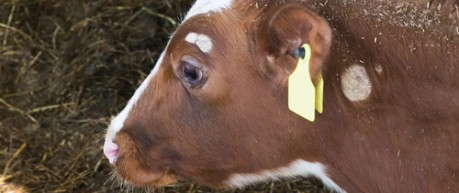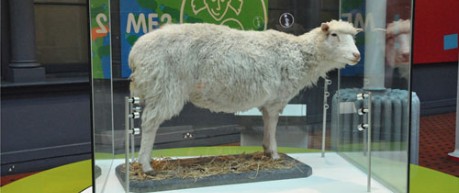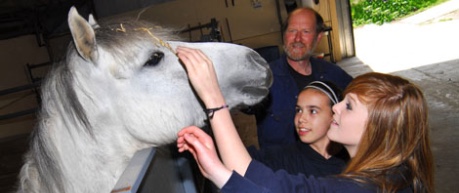Edinburgh boasts many centres of excellence and this tradition continues to thrive
The University of Edinburgh has an outstanding history of discovery, invention and innovation. For more than 400 years the University has played host to scientists, philosophers and politicians who have shaped the modern world.
Animal biosciences research was born out of necessity in Scotland where nearly 70 per cent of land area is suited for grassland and rough grazing only. This dependence on livestock was one of the main driving forces behind the early foundation of Veterinary Schools in Edinburgh (1823, the first in Scotland and the third oldest in Europe) and in Glasgow (in 1862).
Since these early beginnings, Scotland’s animal health research community has developed a world class reputation for excellence and continues to carry out pioneering research that has significant impact on animal health and welfare globally.

Scotland also has a reputation for producing premium products from traceable sources, and this has helped drive exports – for example, nearly £80 million in red meat and £100 million of dairy products annually.
Production is supported by continued investment in innovation in animal biosciences.
The major concentration of the animal biosciences research base in Scotland can be found around the University of Edinburgh's Easter Bush Campus, and it is the largest concentration of animal science related expertise in Europe, home to The Roslin Institute, the Royal (Dick) School of Veterinary Studies (R(D)SVS) and Scotland's Rural College (SRUC).
The Roslin Institute, is a world-leading research institute and the largest dedicated animal biosciences research institute in Scotland with over 650 staff and postgraduate students on site.
The Roslin Institute also serves as the research arm of the adjacent Royal (Dick) School of Veterinary Studies, with both forming part of the College of Medicine and Veterinary Medicine at the University of Edinburgh (UoE). One of the UK’s leading veterinary schools, the R(D)SVS ensures close interaction between teaching, clinical practice and research.
By 2011, The Roslin Institute had helped generate annual productivity gains of £247 million through its breeding and genetics research, which is increasing by around £5 million per year with £12.87 GVA generated by The Roslin Institute for the UK economy. Seven companies have been spun out with a combined turnover of £3.6 million and over 50 jobs created.

It's 20 years since Dolly the Sheep was born at The Roslin Institute. Born on the 5th of July 1996, Dolly was the first animal to be cloned from an adult cell. The research was led by scientists at The Roslin Institute, now part of the University of Edinburgh.
The research team’s success followed its improvements to the single cell nuclear transfer (SCNT) technique used in the cloning process. Dolly became a global scientific icon and SCNT technology has spread around the world and has been used to clone multiple farm animals.
The Royal (Dick) School of Veterinary Studies is one of the oldest veterinary school's in the world, founded in 1823 by William Dick.
In 1837, he was appointed 'Veterinary Surgeon to the Queen in Scotland', and in 1840 the Directors of the Highland Society approved that Dick’s establishment should bear the name ‘Veterinary College’ and that he should be given the title ‘Professor’.
When William Dick died in 1866 he left behind a thriving College with an international relationship, four tutors and an excellent relationship with the governing bodies of the day. Dick bequeathed his College in trust to the Burgh Council of Edinburgh. The School was renamed after a request from his sister Mary Dick and in 1873 it was called Dick’s Veterinary College.

The School has used Home Farm, south of the city at Easter Bush, for large animal teaching since 1947 and it was at Easter Bush that a Veterinary Field Station was built in 1962, shortly followed by a Centre for Tropical Veterinary Medicine.
The Hospital for Small Animals was built at Easter Bush, opening in 1999 and the Equine Hospital facilities were upgraded and completed in 2003. In 2011 the School opened a new, purpose built teaching building on the Easter Bush Campus, moving all teaching and staff from Summerhall.
